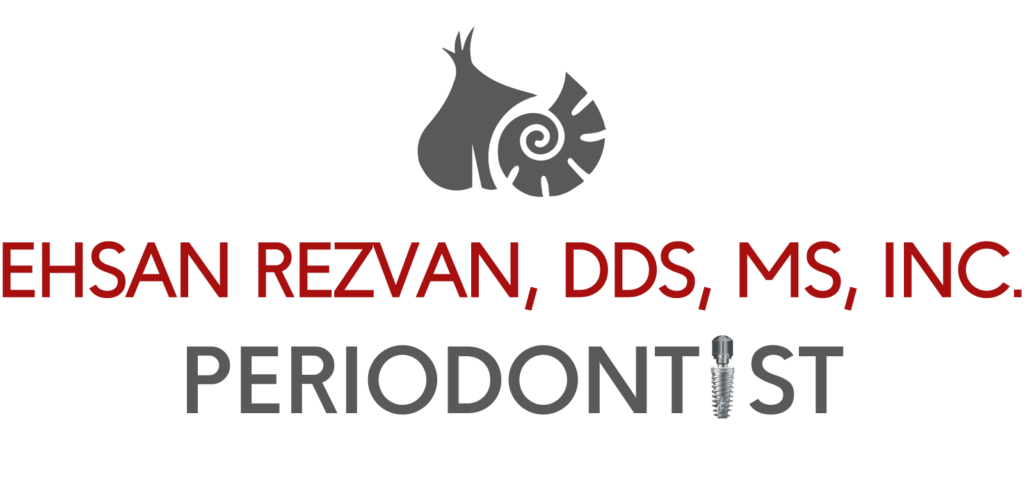Reasons for Jawbone Loss and Deterioration
The most common causes of jawbone deterioration and loss that may require a bone grafting include:
1. Tooth Extractions
When an adult tooth is removed but not replaced, jawbone deterioration often occurs. If teeth are missing, leaving the jawbone without stimulation, the alveolar bone (the portion of the jawbone that anchors teeth) begins to break down or resorb. When the body no longer uses or “needs” the jawbone, it deteriorates and disappears.
The rate and amount of bone deterioration that occurs varies by individual, however most lost occurs within the first eighteen months following the extraction, and continues as time goes on.
2. Periodontal Disease
Ongoing infections of the gums gradually destroy the support of your natural teeth. These infections, known as periodontal diseases, affect one or more of the periodontal tissues: alveolar bone, periodontal ligament, cementum, or gingiva. While the tooth-supporting structures are negatively impacted by many diseased, plaque-induced inflammatory lesions hold the majority, and can be divided into two categories: gingivitis and periodontitis. While gingivitis is less serious and with proper treatment may never progress into periodontitis, it always precedes it.
In genetically-susceptible individuals, dental plaque is the primary cause of gingivitis. A sticky film that coats teeth and contains bacteria, plaque is composed primarily of food particles which get caught below the gum line, even after brushing. The toxins that are produced by the bacteria in plaque leave gums irritated, inflamed, red, and susceptible to bleeding. Prolonged irritation can lead to the gums separating from teeth, opening pockets that trap more bacteria and cause more serious irritation. If proper steps aren’t taken to reverse the effects of plaque buildup, the plaque may turn to tartar, a calcified deposit that contributes to tooth decay above or below the gum line. If gingivitis progresses into periodontitis, the tissue and bone holding the teeth in place will deteriorate. The progressive loss of the alveolar can lead to loosening and subsequent loss of teeth.
3. Dentures/Bridgework
If someone is using unanchored dentures, they are still not providing necessary stimulation to the underlying alveolar bone. Over time, this lack of use causes the bone to resorb and deteriorate, but the dentures rely on the bone to hold them in place. If the bone securing the dentures begins to disappear, people will experience loosening of their dentures, problems eating and speaking, and eventually the inability to hold them in place even with the strongest adhesives. To maintain proper oral health with dentures, proper care, repair, and refitting are essential.
Alternatively, dentures that are supported by anchors adequately stimulate the alveolar bone and typically do not put the jaw at risk of loss.
When it comes to bridgework, the teeth on either side of the appliance provide adequate stimulation to the bone, but the portion of the bridge that spans the gap where teeth once were receives no direct stimulation, making bone loss possible in that area. With a bone graft procedure, Dr. Rezvan can restore bone function and growth, halting the potentially detrimental effects of insufficient denture care.
4. Trauma
Common forms of tooth and jaw trauma include: teeth knocked out due to injury or accident, fractures to the jaw, teeth that have previously been damaged that die and lead to bone loss long after the initial accident.
When a tooth is knocked out or broken to the point where no biting surface remains, bone stimulation stops and often results in bone loss. When this is the case, a bone grafting procedure is necessary to reverse the effects of deterioration to restore function and promote new bone growth in the affected areas.
5. Misalignment
If misalignment occurs, it can create a situation where some teeth no longer have an opposing tooth structure to fit. If a tooth becomes unopposed, it can over-erupt and cause deterioration of the underlying bone.
TMJ problems, everyday wear-and-tear, and lack of proper treatment can lead to abnormal forces that interfere with the jaw’s ability to chew properly. If the bone loses stimulation, bone deterioration can occur.
6. Osteomyelitis
A bacterial infection in the bone and bone marrow of the jaw is known as osteomyelitis. This infection leads to inflammation and a lack of blood supply to the bone. Though it can be treated with antibiotics and removal of the affected bone, a graft may be required to restore any bone function that was lost during the removal.
7. Tumors
Though generally non-threatening, benign facial tumors may grow large and require removal, bringing a portion of the jaw along with it. On the other hand, malignant mouth tumors almost always spread into the jaw and require removal of a section of the bone. In both instances, reconstructive bone grafting is usually required to restore jaw function. The grafting procedure in patients with cancerous tumors, however, may prove more challenging because treatment of the tumor usually also requires removal of surrounding soft tissue.
8. Developmental Deformities
Some birth defects are characterized by missing portions of the teeth, facial bones, jaw or skull. Dr. Rezvan may be able to perform a bone graft procedure to bring bone function and growth where it may have never previously existed.
9. Sinus Deficiencies
When molars are removed from the upper jaw, air pressure from the air cavity in the maxillary sinus causes deterioration of the bone that formerly held the teeth in place. This causes the sinuses to become enlarged, a condition known as hyperpneumatized sinus. Developing over several years, hyperpneumatized sinus may result in insufficient bone for the placement of dental implants. When that is the case, Dr. Rezvan would perform a procedure called a “sinus lift” which treats enlarged sinuses.

